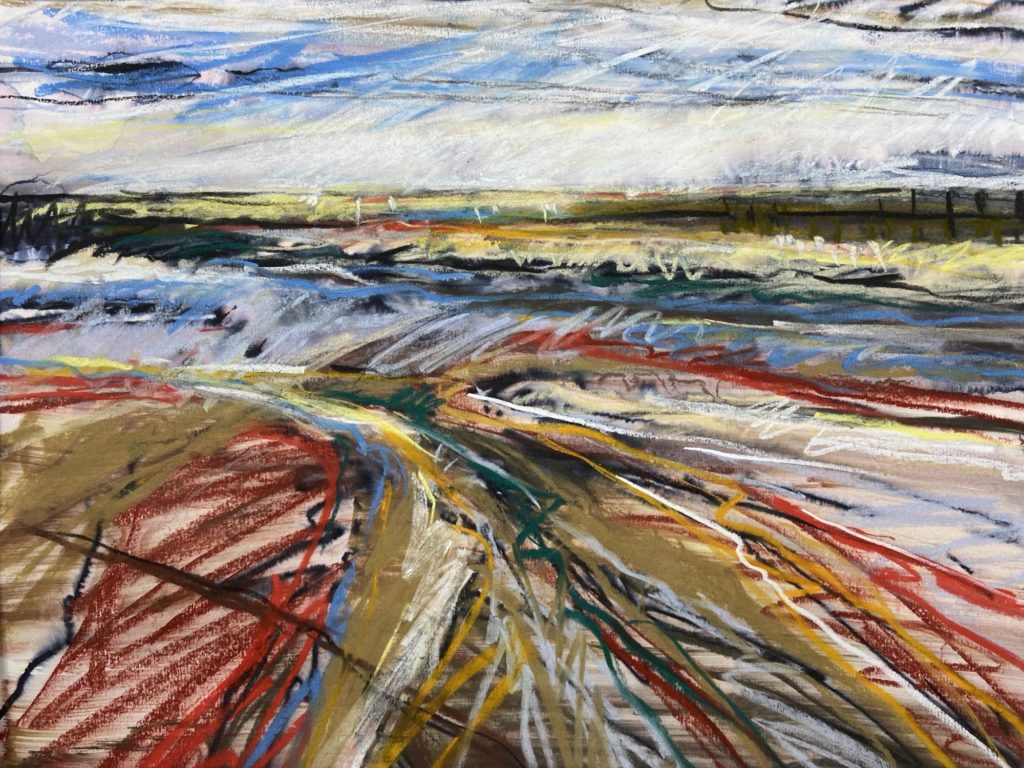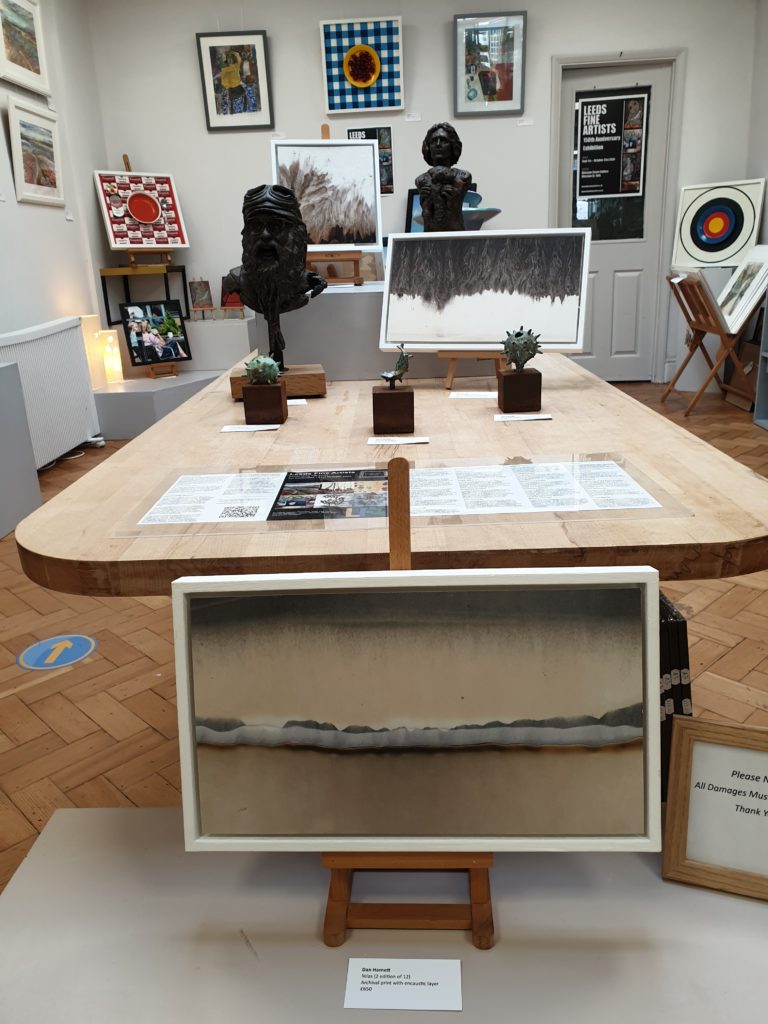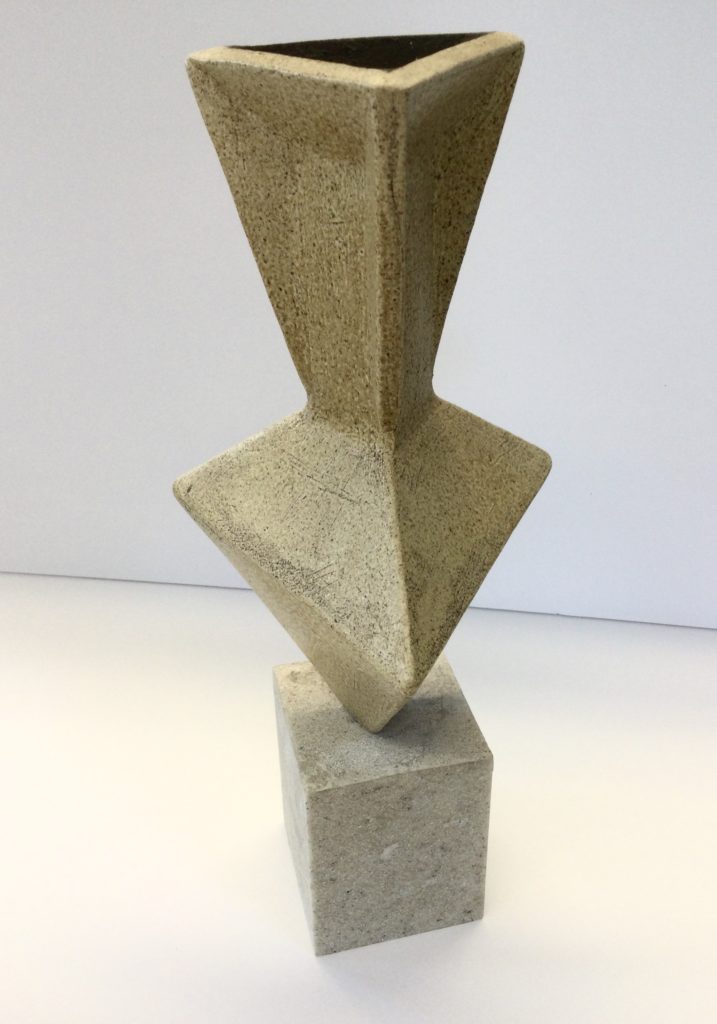
LEEDS Fine Artists is celebrating its 150th anniversary with an exhibition at its regular York host, Blossom Street Gallery, Blossom Street, York.
“For this celebratory exhibition 26 members have come together with an inspirational collection of work demonstrating a wide range of styles and different media,” says gallery owner Kim Oldfield.
“It is very apparent from this collection that the relevance and talent of the group has in no way dimmed and that they will remain a vibrant force in creative circles for many more years to come.”
LFA artist Tim Pearce adds: “About the very same time that the French Impressionists were holding their first exhibition in the Boulevard des Capucines in Paris in the Spring of 1874, a group of Leeds artists were assembling their own show of work in a large public building in Park Row.
“Whereas Monet, Renoir, Degas and the rest ceased exhibiting together after 1886, Leeds Fine Artists continued to survive through two World Wars and on into the 21st century where the organisation still thrives to the present day.

“As part of a series of exhibitions marking 150 years since Leeds Fine Artists’ inception, Blossom Street Gallery is displaying painting and sculpture by more than 20 of its 60 members who, these days, work from locations right across Yorkshire.”
Among the artists taking part are: Sharron Astbury-Petit; Dawn Broughton; Jane Burgess; Mark Butler; Pete Donnelly; Alison Flowers; Roger Gardner; Margarita Godgelf; Dan Harnett; Peter Heaton; Nicholas Jagger; Michael Curgenven; Catherine Morris; Martin Pearson; Clare Phelan; Trevor Pittaway; Neil Pittaway; Annie Robinson; Annie Roche; Sarah Sharpe and John Sherwood.
Sharron Astbury-Petit is a Yorkshire-born artist who works from her studio in Leeds. Favourite subjects in her paintings are nature, time and mortality/immortality. “Using a subtle layering of different media, my work pays homage to the seduction of the intangible,” she says.
Dawn Broughton, who lives in Tadcaster, has a First Class BA (Hons) in painting and an MA in fine art and has been an LFA member since last October. “I am a figurative artist who works in acrylic for paintings and pencil, pen and charcoal for my drawings,” she says. “My practice is perpetually evolving, as it constantly revisits ideas and themes that always stem from my own experiences and observations.”
Figurative painter Jane Burgess works in oils and watercolours and is particularly interested in the effects of light on the landscape. “When painting in oils, I often paint en plein air, completing a work in one session or creating a piece that I then finish in the studio. Watercolour appeals to me because of its immediacy of use and the luminosity of its colours.”

Sculptor Mark Butler works mainly in cast bronze. “Although I use metal – a markedly permanent material – I harness chance to create imperfect and fractured pieces, mirroring the impermanence and vulnerability of the environment around me.”
Pete Donnelly’s sculpture is generally figurative and he tends to use traditional techniques such as ceramics. “However, I often use the face and expression as a tool to encourage an emotional response from the audience and prompt them to ask questions and form their own narrative and connection to the work,” he says.
Alison Flowers’ paintings are inspired by time spent in solitary natural spaces and the restorative effect that being away from it all has on her interior landscape. “Through colour, marks and combining different media, I work in the studio evoking memories and use photographs, sketches and mixed-media experiments as a springboard for paintings that emerge,” she says.
Roger Gardner usually paints in oil on canvas on a range of themes: chairs, shirts, picnic sets, plates, for example. “These themes continue for some while and may be reinvestigated later in a different format,” he says. His studio is in Wakefield, where a community of 30 artists and makers provides mutual support.
Margarita Godgelf explores contemporary existence and identity within social constructs, placing protagonists in fantastical or realistic spaces to form a world of ironic provocation and metaphor. “Sometimes this metaphor is flowers representing the spring that we all battle for,” she says. “Flowers blossom and we stretch, reach out, explore, dance and communicate.”

Dan Harnett’s photography is inspired by his time in the Merchant Navy and childhood on the Kent coast. “Ranging from abstract to still life, it explores human relationships with the sea, reflecting the differing perspectives of seafarers and landlubbers, conjuring images, stories and reflections from earlier voyages.”
Landscape often forms the subject matter of Peter Heaton’s work, along with a concern for “spirit of place”. “I am driven to create something that has resonance, feeling and meaning,” he says. “This can manifest itself in complex, layered images or simpler balanced harmonious compositions with internal spaces.”
Nicholas Jagger explores the Vanitas theme, one that considers the inevitability of death and the transience and vanity of earthly achievements and pleasures, exhorting the viewer to consider mortality and to repent.
“Most of my work witnesses the passing of time over a range of timescales, from the brief lives of leaves to the lifespan of sculpture ravaged and eroded by weather,” he says. “My subjects stand in their own light but are also metaphors for own brief lives.”
Michael Curgenven breaks away from his usual artistic practice of abstract landscapes to focus on figurative pieces for this exhibition. “These are based on my love of drawing,” he says. “They are constructed in mixed media, including ink, pencil, oil pastel and watercolours.”

Catherine Morris works in diverse media – oil, acrylic, collage – but the common denominator is layers, allowing colours underneath to peep through and produce unexpected results. “My subject matter is the Yorkshire moors, but not in a literal way, often using just the shapes and colours I see to produce something abstract,” she says.
Since the mid-1990s, Martin Pearson has been exploring a form of lyrical abstraction utilising personal motifs. “I use a variety of mark-making techniques to develop textures and patterns,” he says. “In more recent paintings, still-life elements appear, alongside their abstract counterparts. I hope my paintings are optimistic.”
Award-winning Holmfirth printmaker Clare Phelan is influenced by the post-industrial landscapes of northern England. “I work with mass-produced obsolete materials from the past,” she says. “Through etching and collagraph printmaking processes, these redundant artefacts are given a new life.”
Two of Trevor Pittaway’s favourite subjects are his native North Yorkshire and the “magical city” of Venice. “When travelling, I sketch using pencil, watercolour and an iPad,” he says. “In the studio, I then use these drawings for information. I paint in oil, acrylic and egg-tempera and also produce original etchings and digital prints.”
Wakefield-born printmaker, painter and draughtsman Neil Pittaway’s works reflect ideas from East and Western sources and perspectives such as Anglo-European heritage, transatlantic connections, Asian landscapes, gothic revival architecture, urbanness, satire, illustration and narrative.

“My work incorporates and explores these identities through direct and indirect observation, creating complex and seemingly agoraphobic, perspective spaces,” says the Royal Academy graduate and New English Art Club, Royal Watercolour Society and Royal Society of Painter-Printmakers member.
Although Annie Robinson’s work is connected to the landscape, whether visited, studied or remembered, she “tends to work in an exploratory and instinctive way, drawn to the abstract qualities of paint itself and letting the paint evolve and speak for itself.”
After a long career in teaching, Annie Roche has time to explore her own creativity. “Colour is central to my work; it brings me a sense of joy and positivity. Still life, landscape and abstraction all cross over. Compositions are not literal; serendipity allows shapes to sometimes be recognisable but often obtuse, open to reinterpretation.”
Motherhood, angels, birds, woodland and the passing seasons are a constant theme of Malton artist Sarah Sharpe’s work. “Imagination, the land I tread, people and their stories underpin my work,” says this member of Leeds Fine Artists, Manchester Academy of Fine Arts and Society of Catholic Artists.
John Sherwood’s work develops freely over time. “The approach remains flexible and is open-ended in terms of outcome,” he says. “I have no firm preconceptions as to the purpose of what I do, other than perhaps that I see art as being a tool that interacts positively with my life.”
Leeds Fine Artists: the back story

FOUNDED in 1874, the Leeds Fine Art Club, now called Leeds Fine Artists, soon became a major player in the intellectual and cultural life of Leeds.
Its meetings and annual exhibitions were popular among the middle-class professionals who had grown up to service the city’s expanding industrial base.
In the course of its 150-year history, the group has been associated with various artists of renown, some of whom have been social reformers, such as Ina Kitson Clark, the prominent campaigner for women’s rights, and Beatrice Kitson, the first woman to be Lord Mayor of Leeds.
The organisation’s members have always embraced a wide variety of subjects and styles. Eric Taylor was renowned for the paintings he produced when he was among the British troops that liberated the Bergen-Belsen concentration camp.
While some artists evoked the Yorkshire landscape, such as Staithes Group member Owen Bowen, others travelled widely: Frank Dean, for example, painted scenes in North Africa, the Middle East and India.

A blue plaque at Leeds City Art Gallery commemorates Robert Hawthorne Kitson, who, as a gay man, left Britain to live in Sicily, where his villa was much frequented by artistic friends, including Frank Brangwyn and Wilhelm von Gloeden, who was noted for his homoerotic photography.
Perhaps the most famous artist in the LFA ranks is Jacob Kramer, who was born in Ukraine but spent much of his working life in Leeds, becoming renowned for his depiction of Jewish life.
Today, members live throughout Yorkshire with some further afield, from Kent to Scotland, and the LFA continues to attract artists of the highest ability across a variety of media, from painting, drawing and printmaking to ceramics, sculpture and textiles.
To mark the 150th anniversary, LFA has produced a commemorative book, Leeds Fine Artists 1874-2024, featuring the work of 50 current members and an historical introduction to the origins of the group and its 20th century history. Published in hardback, copies are available at Blossom Street Gallery and at leedsfineartists.co.uk/yorkshire/ at £20.
Leeds Fine Artists, Celebrating 150 Years, Blossom Street Gallery, Blossom Street, York, on show until October 31. Opening hours: Thursdays, Fridays and Saturdays, 10am to 4pm; Sundays, 10am to 3pm.

